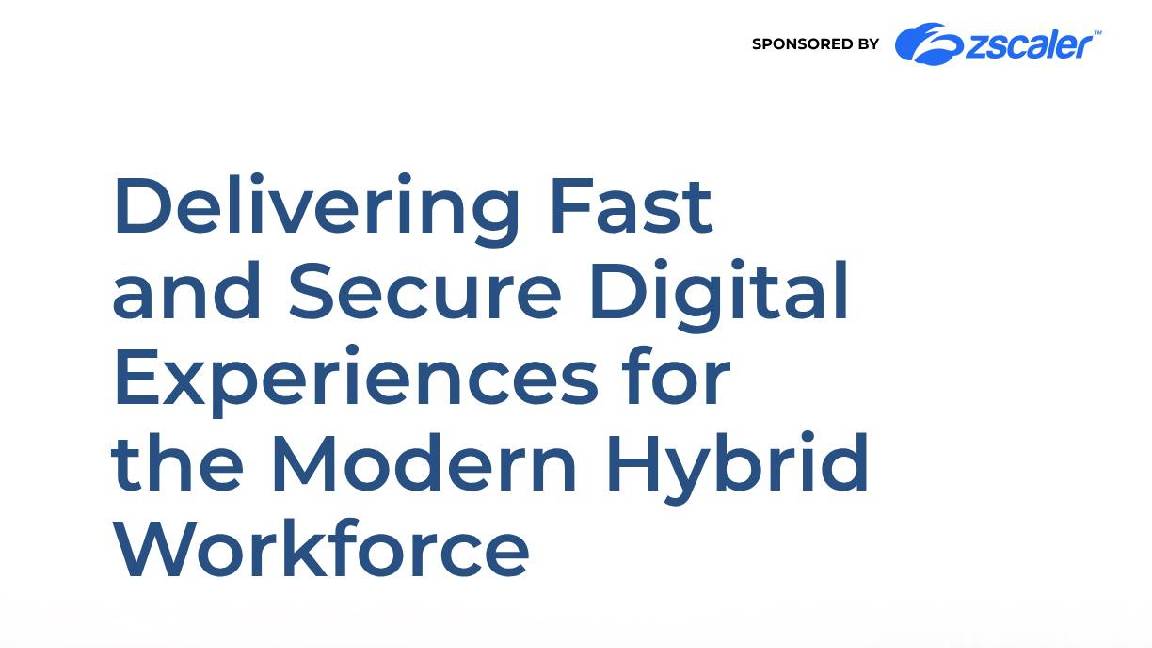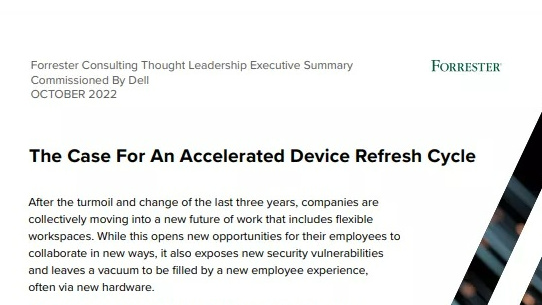How cloud is rendering traditional document management obsolete
Do cloud and document management co-exist? Many companies are finding ways to improve productivity by using cloud

It’s not hard to understand what people mean when they put the words "document" and "management" together. As a term, it’s self-explanatory. But if you put the word "cloud" anywhere near it, things start to get a little more hazy.
The first issue that needs to be addressed is whether you can actually place the word "cloud" next to "document management” without changing its meaning. David McLeman, managing director at SaaS security specialist and Google Apps for Business reseller Ancoris, is pretty clear you can’t.
"Traditional document management systems have largely followed the logic of the paper trail," he states. Their original function was to store, track and retrieve documents, but "cloud computing has changed this and the focus is shifting from storage to collaboration."
Products like Google Apps for Business enable real-time collaboration in multiple ways and provide tools which support team working, but they also mean documents can end up being organised in websites or shared across project teams.
From McLeman’s point of view, there are a number of benefits in using Google Docs. It removes the need for version control, makes a single copy of a document simultaneously accessible by authorised contributors and can "turn static data into dynamic content to drive the business forward and bring innovation."
But this also means that managing content in the cloud "goes a lot further than simply storing and tracking documents."
Dr Graham Oakes, author of Project Reviews, Assurance and Governance, says workgroup collaboration and document sharing is one of the most obvious scenarios where organisations are adopting what could be termed as cloud-based document management. Whether workgroup collaboration and document sharing qualifies as document management is a moot point.
Get the ITPro daily newsletter
Sign up today and you will receive a free copy of our Future Focus 2025 report - the leading guidance on AI, cybersecurity and other IT challenges as per 700+ senior executives
Oakes says people using products such as Google Docs or MS Office 365 are focused on issues such as "making sure everyone can access the latest version of a document without having dozens of duplicates floating around" in emails for example, which implies a level of document control.
But not only are these types of sharing systems creating new ways of creating and modifying documents, they are also raising questions over how and when those documents should be considered completed and stored as a final version. Oakes says that the information in cloud-based systems such as Google Docs, MS Office 365 or Dropbox "is rarely integrated with existing document management systems”.
In most cases, Google Docs, MS Office 365 or Dropbox are informal solutions "used to get around the limitations of the formal document management systems, or at least, to get around the limitations in the way that these systems have been implemented."
The problem is that while they solve the immediate headache of how to adopt workgroup collaboration, they do so "at the expense of creating a bigger strategic problem, information just gets even more widely scattered and hence harder to find and integrate."
McLeman agrees that Google Docs is not a document management system so if a company using the product has to move all documents into a document management system for legal or compliance reasons, “it would be necessary to download the document and upload it into the document management system."
This is a phenomenon that Oakes has previously observed. "People sometimes copy information from the informal stores into formal document management systems manually," he says. A team might collaborate on creating a design via Dropbox, for example, going through multiple versions and iterations. When a design is agreed, someone copies the final version into a more formal corporate repository.
McLeman claims "a lot of customers move away from a document management system for office documents” in favour of Google Docs because it can give them a single point of access (through the browser), a single point of storage (Google Docs), full access control list per document and revision history per document.
Oakes suggests smarter companies recognise what is going on “and set up policies and support systems to enable people to decide what needs to be stored formally and to transfer it there when a definitive version is created”. While this may involve setting up a formal system in the cloud, it’s as likely to be based on existing systems.
Dumb IT organisations, by contrast, "pretend that cloud-based collaboration isn’t going on. They write policies that ban cloud services and pretend this solves the problem. I’ve rarely seen this work. For IT these days, the choice isn’t between using the cloud and not using it, it’s between knowing how it’s being used and not knowing how it’s being used."
Oakes sees organisations using specialised solutions for document scanning and management where they are tightly linked to specific business processes, such as expenses handling. The focus is typically on local concerns rather than on the bigger picture in trying to make a specific, reasonably well-defined process work a little better.
Lucy Beck is UK sales director at Palette, a Swedish provider of a SaaS-based product, PaletteArena, which allows customers to scan invoices and authorise them in the cloud. “We’re finding customers are actively requesting the ability to handle their financial documents – invoices, purchase orders and related material – in the cloud,” she reveals.
Cloud-based document management is gaining a foothold in these specific types of applications “because they have a clear operational and financial benefit in what is a complex business area."
Beck cites the example of Palette customer Stena Line, the ferry operator and shipping company, which has “halved its invoice processing time using our software, which creates obvious savings and efficiency gains”. She argues cloud-based document management will inevitably spread into other business areas, especially as vendors demonstrate their solutions have the appropriate levels of authentication and security to protect data.
The shift towards document collaboration and cloud-based storage of documents should also open up possibilities at a much higher level, giving businesses the opportunity to try to integrate intelligence across multiple documents. Oakes says he hasn’t come across anyone trying to do this yet, at least not with cloud-based services, but he believes people looking at integrating intelligence across documents are probably using solutions they have built up over the years.
But there is likely to be an impetus to try and marry some type of business analytics to content, especially as business documents include more multimedia content that can be broadcast to related documents, to serve up intelligent context sensitive information. Indeed, John Mancini, president of industry body AIIM, believes this will be a driving force of document management in the cloud in the future.
Andrew Peddie, managing director at First Hosted believes the notion of static documents is starting to fade, “primarily because the cloud has altered the traditional document to a real-time KPI indicator delivered via a dashboard, making documents such as collaborative spreadsheets redundant”. Cloud-hosted business applications can interconnect accounting, CRM and other inventory management data and update it across multiple visible platforms and business locations as changes are input in one area.
A business with multiple sites can use a cloud-hosted application to analyse the profitability and effectiveness of a particular business location in real time, as it happens, simply and from a central access point. In place of spreadsheets, users are able to exploit real-time dashboards to display data, as well as using mobile devices to access and input data.
“The possibilities for cloud-hosted document management and coordinated business analytics are huge, and businesses are already taking advantage of these,” he claims.
-
 Asus ZenScreen Fold OLED MQ17QH review
Asus ZenScreen Fold OLED MQ17QH reviewReviews A stunning foldable 17.3in OLED display – but it's too expensive to be anything more than a thrilling tech demo
By Sasha Muller
-
 How the UK MoJ achieved secure networks for prisons and offices with Palo Alto Networks
How the UK MoJ achieved secure networks for prisons and offices with Palo Alto NetworksCase study Adopting zero trust is a necessity when your own users are trying to launch cyber attacks
By Rory Bathgate
-
 'Digital hide-and-seek': Workers are wasting hundreds of hours a year sourcing the information they need to carry out their role
'Digital hide-and-seek': Workers are wasting hundreds of hours a year sourcing the information they need to carry out their roleNews Knowledge workers globally are wasting a quarter of their working week tracking down information, new research from Atlassian has revealed.
By George Fitzmaurice
-
 Untethered: How CIOs and CISOs are paving the way for the new hybrid workforce
Untethered: How CIOs and CISOs are paving the way for the new hybrid workforceWhitepaper Effective techniques to transition from exposed legacy infrastructure to an effective zero trust strategy
By ITPro
-
 Unlocking the power of your digital services
Unlocking the power of your digital servicesSponsored Businesses have invested significant cash into technology since COVID-19, but are they really getting their money's worth?
By ITPro
-
 Delivering fast and secure digital experiences for the modern hybrid workforce
Delivering fast and secure digital experiences for the modern hybrid workforceWhitepaper A new approach to digital experience monitoring that can monitor the health of all systems
By ITPro
-
 Collaboration is the glue that holds your business together
Collaboration is the glue that holds your business togetherSPONSORED A combination of productivity tools and cloud telephony can enable the best from your workforce
By ITPro
-
 The future of work and the forgotten workforce
The future of work and the forgotten workforcewhitepaper How to deploy a mobile-first strategy so no one gets left behind
By ITPro
-
 The case for an accelerated device refresh cycle
The case for an accelerated device refresh cycleWhitepaper Achieving a more cost-effective device lifecycle overall
By ITPro
-
 Employees are choosing how they work
Employees are choosing how they workWhitepaper And with the right secure digital strategy, this could be a great thing for your business: today and far into the future
By ITPro